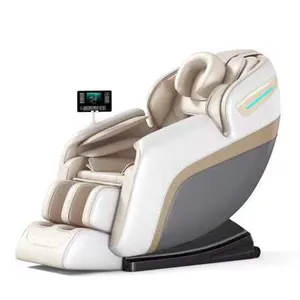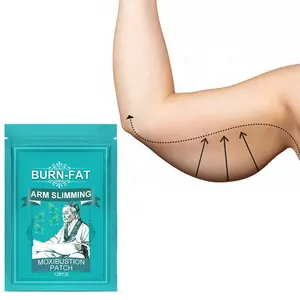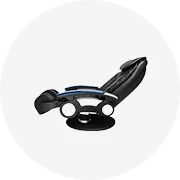ได้รับความนิยมในอุตสาหกรรมของคุณ






เชื่อมสแตนเลส 304 316 ลวดตาข่ายลวดตาข่ายเชื่อมสังกะสีแผงฮาร์ดแวร์สําหรับกรงไก่
฿118.84 - ฿317.89
การสั่งซื้อขั้นต่ำ: 500 เมตร







ลวดเหล็กกล้าคาร์บอนต่ำที่ไม่ใช่สังกะสีแผงลวดตาข่ายรั้วกรงไก่สำหรับการก่อสร้าง1X1 2X3 2X4X4นิ้ว
฿293.38 - ฿315.67
การสั่งซื้อขั้นต่ำ: 100 ม้วน







5ft H 16ft W ชุบสังกะสี4รั้ว Guare แผงรั้วปศุสัตว์รั้วฟาร์มเลี้ยงไก่กลางแจ้ง
฿887.57 - ฿1,147.53
การสั่งซื้อขั้นต่ำ: 330 ชิ้น







สุ่มไก่สูง8ฟุตลวดตาข่าย1/2 "3/4'' ลวดตาข่ายชุบสังกะสีหกเหลี่ยมสำหรับสุ่ม
฿334.23 - ฿371.37
การสั่งซื้อขั้นต่ำ: 100 ม้วน







Fengmu กรงแมวไก่ขนาดใหญ่สำหรับสัตว์เลี้ยงกล่องทรายแมวสินค้าเฉพาะสัตว์เลี้ยง
฿185.69 - ฿742.74
การสั่งซื้อขั้นต่ำ: 100 กล่อง







ประเภท A ประเภท H ชั้นไก่ไก่กรงฟาร์มสัตว์ปีกป้อนไก่ไก่เนื้ออุปกรณ์อัตโนมัติการออกแบบตู้ไก่
฿2,228.20 - ฿4,085.04
การสั่งซื้อขั้นต่ำ: 10 หน่วย






กรงไก่แบบเป็นชั้นรูปตัว H สำหรับฟาร์มสัตว์ปีกอุปกรณ์อัตโนมัติการออกแบบเล้าไก่
พร้อมส่ง
฿4,827.77 - ฿5,384.82
การสั่งซื้อขั้นต่ำ: 1 หน่วย
การจัดส่งต่อชิ้น: ฿3,435.52



หม้อไก่ไม้ขนาดใหญ่กลางแจ้งบ้านไก่สองชั้นการออกแบบหม้อไก่
฿3,156.62 - ฿3,527.99
การสั่งซื้อขั้นต่ำ: 100 ชิ้น
การจัดส่งต่อชิ้น: ฿3,321.88






Customized Size Industrial h Type Design Of Raising Layer Chicken Cage Coop
฿41,147.40
การสั่งซื้อขั้นต่ำ: 50 ชุด






กรงไก่ไม้กรงสัตว์ดีไซน์ใหม่สุ่มไก่ไม้พร้อมหลังคา
฿2,860.64 - ฿6,661.20
การสั่งซื้อขั้นต่ำ: 100 ชุด
การจัดส่งต่อชิ้น: ฿1,596.51






อุปกรณ์การเลี้ยงสัตว์ปีก บ้านไก่เนื้อ อุปกรณ์ฟาร์มสัตว์ปีก การออกแบบโรงเลี้ยงไก่อุตสาหกรรมอัตโนมัติ
฿2,599.57 - ฿2,964.62
การสั่งซื้อขั้นต่ำ: 1 ชุด






การออกแบบใหม่ของตู้ไก่ชนิดราคาถูกพร้อมกรงไก่ชั้นลวดชุบสังกะสีสําหรับขาย
฿3,379.44 - ฿4,047.90
การสั่งซื้อขั้นต่ำ: 1 ชุด






ประเภท A ประเภท H ชั้นไก่ไก่กรงฟาร์มสัตว์ปีกป้อนไก่ไก่เนื้ออุปกรณ์อัตโนมัติการออกแบบตู้ไก่
฿2,525.30 - ฿3,639.40
การสั่งซื้อขั้นต่ำ: 1 ชิ้น












ประเภท A ประเภท H ชั้นไก่ไก่กรงฟาร์มสัตว์ปีกป้อนไก่ไก่เนื้อการออกแบบไก่โค้ง
฿2,413.89 - ฿3,156.62
การสั่งซื้อขั้นต่ำ: 10 ชุด






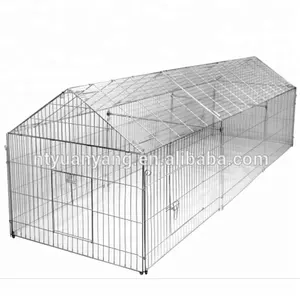





กรงไก่กรงสัตว์เลี้ยง,กรงไก่ลวดโลหะกลางแจ้งดีไซน์ใหม่ทำความสะอาดง่าย
฿928.42 - ฿1,856.84
การสั่งซื้อขั้นต่ำ: 50 ชิ้น






ออกแบบใหม่ใช้ Coop สำหรับไก่สัตว์ไก่2.15M ปีกอุปกรณ์ราคา
฿2,896.66 - ฿5,570.50
การสั่งซื้อขั้นต่ำ: 1 ชุด












ระบบการเลี้ยงสัตว์ปีกขนาดใหญ่ใช้แบตเตอรี่แบบสุ่มสำหรับใช้ในฟาร์มเลี้ยงไก่
฿1,856.84 - ฿7,798.70
การสั่งซื้อขั้นต่ำ: 50 ชุด








SDC004ขนาดที่กำหนดเองการออกแบบราคาถูกบ้านไม้กลางแจ้งสุ่มไก่
฿2,988.76 - ฿3,362.36
การสั่งซื้อขั้นต่ำ: 50 ชิ้น






Jinmuren ไก่บ้านออกแบบแบตเตอรี่ชั้นสุ่มขายสำหรับฟาร์มปากีสถาน
฿2,562.43 - ฿6,276.10
การสั่งซื้อขั้นต่ำ: 1 ชุด












สุ่มไก่ไม้พร้อมกล่องรังสำหรับไก่ไข่วางไข่กล่องรังไก่
฿1,069.54 - ฿1,106.68
การสั่งซื้อขั้นต่ำ: 100 ชุด






ราคาถูกขายร้อนคุณภาพสูงขนาดใหญ่สำเร็จรูปไม้กรงสัตว์เลี้ยง Commercial ไก่ไก่บ้าน Hen Coop สำหรับชั้น
฿3,676.53 - ฿13,220.65
การสั่งซื้อขั้นต่ำ: 1 ชิ้น






3ชั้น96นกวางไก่ชั้นกรงที่มีราคาที่แข่งขันสำหรับการออกแบบในบูร์กินาฟาโซฟาร์มสัตว์ปีก
฿3,268.03 - ฿4,642.08
การสั่งซื้อขั้นต่ำ: 10 ชุด






มีใบรับประกันคุณภาพสร้างสุ่มไก่ฟรีสำหรับชั้นกรงไก่โลโก้ที่กำหนดเองเฟอร์จีนหรือไม้สน
฿9,394.09 - ฿9,401.52
การสั่งซื้อขั้นต่ำ: 100 ชิ้น






3ชั้น96ไก่ไข่ไก่ชั้นกรงที่มีราคาที่แข่งขันสำหรับการออกแบบในบูร์กินาฟาโซฟาร์มสัตว์ปีก
฿3,759.35 - ฿4,663.62
การสั่งซื้อขั้นต่ำ: 1 ชุด
การจัดส่งต่อชิ้น: ฿17,750.95












Factory Custom Design Chicken Coop with Waterproof Roof Chicken Coops for Hens
฿1,727.97 - ฿1,907.34
การสั่งซื้อขั้นต่ำ: 50 ชุด
การจัดส่งต่อชิ้น: ฿1,560.12







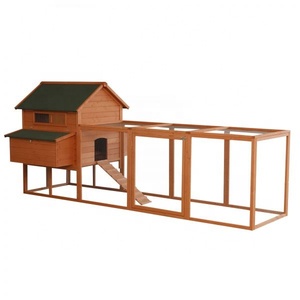




Manshanhong ชั้นออกแบบกรงไก่พับ Hutch แบบพกพาล้อ Hen ราคาถูก Coop ไก่
฿371.37 - ฿5,570.50
การสั่งซื้อขั้นต่ำ: 100 ชุด






ปากกาลายไก่สำหรับสนามพร้อมฝาปิดกลางแจ้งโลหะด้านนอกสำหรับสัตว์เล็กเล้าไก่กระต่ายเป็ด
฿1,856.84
การสั่งซื้อขั้นต่ำ: 2 ชิ้น
การจัดส่งต่อชิ้น: ฿4,768.72






สุ่มไก่โลหะขนาดใหญ่20x10ft Wakl-ในเล้าไก่และวิ่งฟาร์มไก่หลังบ้านฟาร์มปศุสัตว์วิ่งเดินในกรงสัตว์ปีก
฿3,323.73 - ฿4,326.42
การสั่งซื้อขั้นต่ำ: 500 ชุด






ที่มีคุณภาพดีและราคาถูกฟาร์มสัตว์ปีกไก่ไข่รวบรวมชั้นไก่กรงสัตว์ปีกเพิงชั้นสุ่ม
฿2,228.20 - ฿4,456.40
การสั่งซื้อขั้นต่ำ: 1 ชุด
หมวดหมู่ยอดนิยม
เกี่ยวกับ การออกแบบเล้าไก่
การออกแบบเล้าไก่ ไม่ใช่เรื่องใหม่สำหรับคนทั่วไปในปัจจุบันและไม่ถือว่าเป็นสิ่งต้องห้ามอีกต่อไป หากคุณกำลังมองหาความสุขสุดท้ายนี้คุณต้องตรวจสอบความยิ่งใหญ่ คอลเลกชัน การออกแบบเล้าไก่ ที่ Alibaba.com เหล่านี้ยั่วยวนและโค้ง การออกแบบเล้าไก่ คุ้มค่ากับเงินทุกบาทและมั่นใจว่าจะทำให้ค่ำคืนนี้พิเศษสำหรับคุณ ตุ๊กตาเหล่านี้มีลักษณะเหมือนจริงตั้งแต่ขนไปจนถึงปลายเท้าในทุกแง่มุม
ไม่ว่าคุณจะเป็นคนขี้เหงาที่กำลังมองหาคู่ชีวิตที่เหมือนมีชีวิตหรือคู่รักที่ต้องการเติมชีวิตชีวาให้กับชีวิตคุณสามารถใช้สิ่งเหล่านี้ได้ . การออกแบบเล้าไก่ สำหรับจุดไฟนั้น ที่งดงามเหล่านี้ การออกแบบเล้าไก่ สามารถปรับแต่งได้ตามความคาดหวังของคุณ น่าทึ่งเหล่านี้ การออกแบบเล้าไก่ มีให้เลือกทั้งชายและหญิงและทำจากซิลิโคนเกรดยาเพื่อความปลอดภัยในการใช้งาน รับตอนนี้และเพลิดเพลินไปกับค่ำคืนแห่งความหลงใหลและไฟ
Alibaba.com ขอเสนอสิ่งที่น่าทึ่งเหล่านี้ การออกแบบเล้าไก่ ในทุกรูปร่างขนาดและชาติพันธุ์ ไม่ว่าความต้องการของคุณสำหรับไฟล์. การออกแบบเล้าไก่ คุณสามารถหาได้ทั้งหมดบนไซต์ เหล่านี้ การออกแบบเล้าไก่ ได้รับการขึ้นรูปโดยช่างฝีมือที่ดีที่สุดและทุกรายละเอียดที่ซับซ้อนจะได้รับการตรวจสอบอย่างละเอียด ตุ๊กตาเหล่านี้มีดวงตาผมเล็บและส่วนอื่น ๆ ของร่างกายคล้ายกับคนในชีวิตจริง
Alibaba.com ให้บริการที่หลากหลาย การออกแบบเล้าไก่ ที่สามารถช่วยคุณซื้อผลิตภัณฑ์ที่เหมาะสมกับงบประมาณของคุณและข้อกำหนดอื่น ๆ ผลิตภัณฑ์เหล่านี้ปลอดภัยต่อการใช้งานได้รับการรับรองและเป็นมิตรกับสิ่งแวดล้อม มีคำสั่งซื้อ OEM สำหรับผลิตภัณฑ์เหล่านี้
ไม่ว่าคุณจะเป็นคนขี้เหงาที่กำลังมองหาคู่ชีวิตที่เหมือนมีชีวิตหรือคู่รักที่ต้องการเติมชีวิตชีวาให้กับชีวิตคุณสามารถใช้สิ่งเหล่านี้ได้ . การออกแบบเล้าไก่ สำหรับจุดไฟนั้น ที่งดงามเหล่านี้ การออกแบบเล้าไก่ สามารถปรับแต่งได้ตามความคาดหวังของคุณ น่าทึ่งเหล่านี้ การออกแบบเล้าไก่ มีให้เลือกทั้งชายและหญิงและทำจากซิลิโคนเกรดยาเพื่อความปลอดภัยในการใช้งาน รับตอนนี้และเพลิดเพลินไปกับค่ำคืนแห่งความหลงใหลและไฟ
Alibaba.com ขอเสนอสิ่งที่น่าทึ่งเหล่านี้ การออกแบบเล้าไก่ ในทุกรูปร่างขนาดและชาติพันธุ์ ไม่ว่าความต้องการของคุณสำหรับไฟล์. การออกแบบเล้าไก่ คุณสามารถหาได้ทั้งหมดบนไซต์ เหล่านี้ การออกแบบเล้าไก่ ได้รับการขึ้นรูปโดยช่างฝีมือที่ดีที่สุดและทุกรายละเอียดที่ซับซ้อนจะได้รับการตรวจสอบอย่างละเอียด ตุ๊กตาเหล่านี้มีดวงตาผมเล็บและส่วนอื่น ๆ ของร่างกายคล้ายกับคนในชีวิตจริง
Alibaba.com ให้บริการที่หลากหลาย การออกแบบเล้าไก่ ที่สามารถช่วยคุณซื้อผลิตภัณฑ์ที่เหมาะสมกับงบประมาณของคุณและข้อกำหนดอื่น ๆ ผลิตภัณฑ์เหล่านี้ปลอดภัยต่อการใช้งานได้รับการรับรองและเป็นมิตรกับสิ่งแวดล้อม มีคำสั่งซื้อ OEM สำหรับผลิตภัณฑ์เหล่านี้

